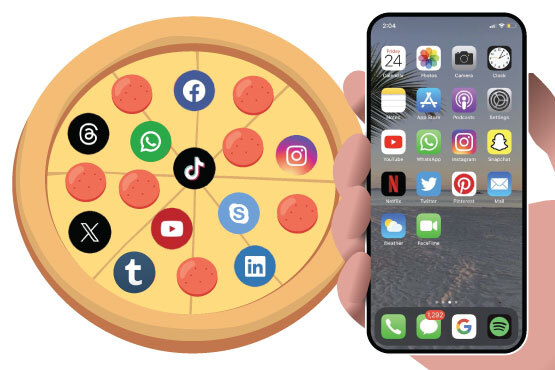Social media is essential for restaurants interested in creating a low-budget, effective marketing plan. However, no two platforms are the same—each has its rules and nuances, and understanding how to navigate them is crucial for a successful marketing strategy. This article explores best practices for marketing your restaurant on popular social media platforms.
Facebook: Build Your Community
With over 2.9 billion active monthly users, Facebook is the world’s most popular social media platform. The platform offers a variety of functionalities, such as publishing posts and stories, sending messages, posting reviews, and creating groups and events. With so much to offer, it can be difficult for restaurant owners to know where to start. Instead of looking at what the platform offers, focus on what matters to your customers.
Facebook is about establishing your online community and building long-lasting relationships with customers. While posting the occasional update or picture is important, users will rely on your other platforms for this content. Instead, create a business page or group to promote thoughtful discussions and community feedback.
Good for:
Encouraging sales: Customers are three times more likely to buy from your brand if they form an emotional connection.
Increasing visibility: Facebook prioritizes posts from groups in a user’s newsfeed.
Building organic reach: Groups have a higher reach than your Facebook page.
Gathering customer data: Facebook Groups foster honest discussion and feedback about your business or industry.
Instagram: Create a Visual Feast
Instagram prioritizes aesthetics. Research shows that people process visual data 60,000 times faster than text—we eat with our eyes first! With more than 250 million posts, #food is the most popular hashtag on the platform, ideal for attracting new customers by showcasing high-quality images and videos of your menu.
Good for:
Promoting high-interest content: Pizza is the most Instagrammed food.
Increasing customer base: 37% of diners use social media to find new dining hot spots.
Driving engagement: Fast-food and QSR restaurants experience five times higher levels of engagement than full-service restaurants.
![]()
Consider partnering with a micro-influencer to build brand awareness and establish trust with your audience. If you’re looking to build trust, consider an influencer. Research shows that 50% of Millennials trust product recommendations from influencers (compared to 38% for celebrities).
X: Promote Real-Time Engagement
X (formerly Twitter) is for real-time conversations. With approximately 500 million tweets sent daily, audiences expect high engagement and updates at least a few times a day. Use this platform to share updates, respond to customer inquiries, and participate in trending topics within the food industry. Additionally, studies show that X ads are 11% more effective than television commercials.
Good for:
Increasing loyalty: More than half of consumers visited a restaurant because of promotions or discounts they saw on X.
Generating referrals: 50% of foodies have ordered a meal or visited a restaurant based on recommendations found on X.
Staying on top of industry trends: Identify customer behaviors and trends more quickly than on other social media platforms.
Create a Cross-Channel Experience
Customers use each social media platform for a unique purpose and may have multiple channels impact their purchase journey. For example, a new customer may turn to Facebook for authentic pizzeria recommendations and then see a deal on Instagram before ordering through your restaurant's online ordering site. Create a consistent brand experience by linking your restaurant’s social media profiles, including its contact information, and having the same or similar profile pictures and business names.
Conclusion
Social media has a lot to offer your restaurant: establishing trust, building brand recognition, and generating referrals are a few ways to use these platforms to your business’s advantage. Research each platform and consider how to utilize them in your restaurant's marketing strategy. From there, you can test and adjust your content as your following grows and create a reliable social media marketing strategy to drive business. Happy posting!
Interested in learning more about how your restaurant can enhance its digital marketing strategy? Read SpeedLine’s Pizza and Delivery Marketing Ebook.
Posted on Wed, Nov 29, 2023 @ 08:11 AM.
Updated on January 18, 2024 @ 8:45 PM PST.

